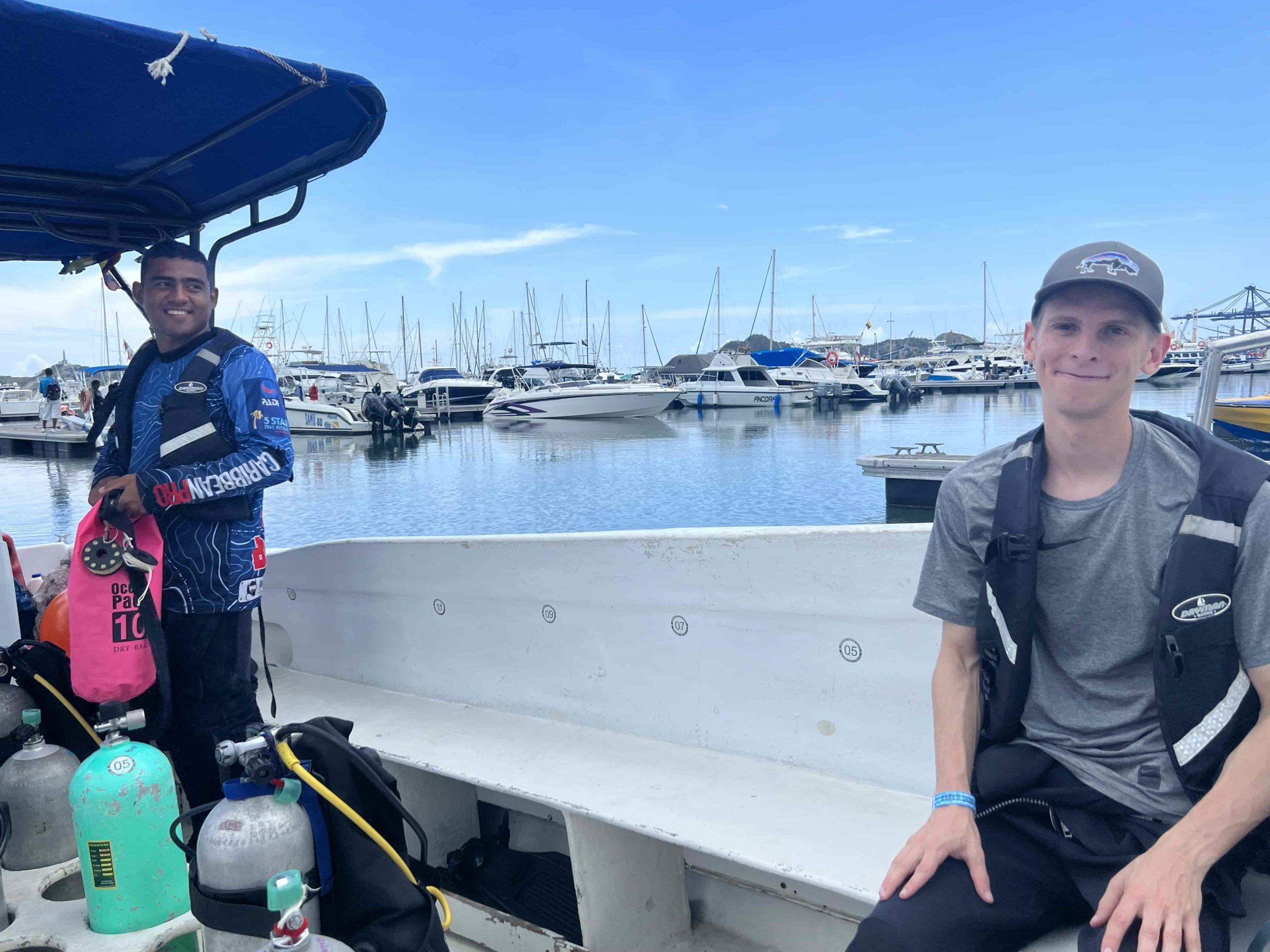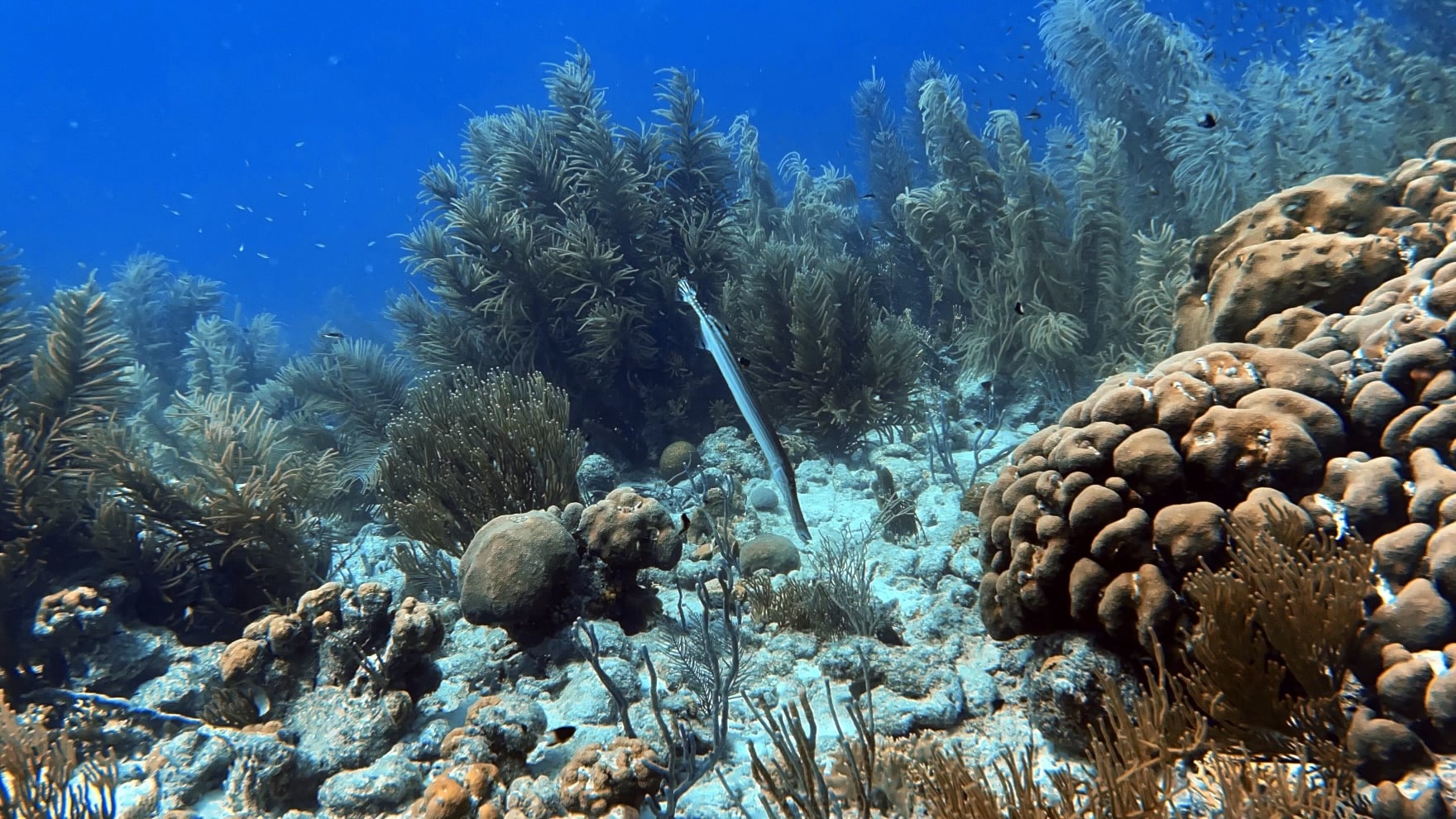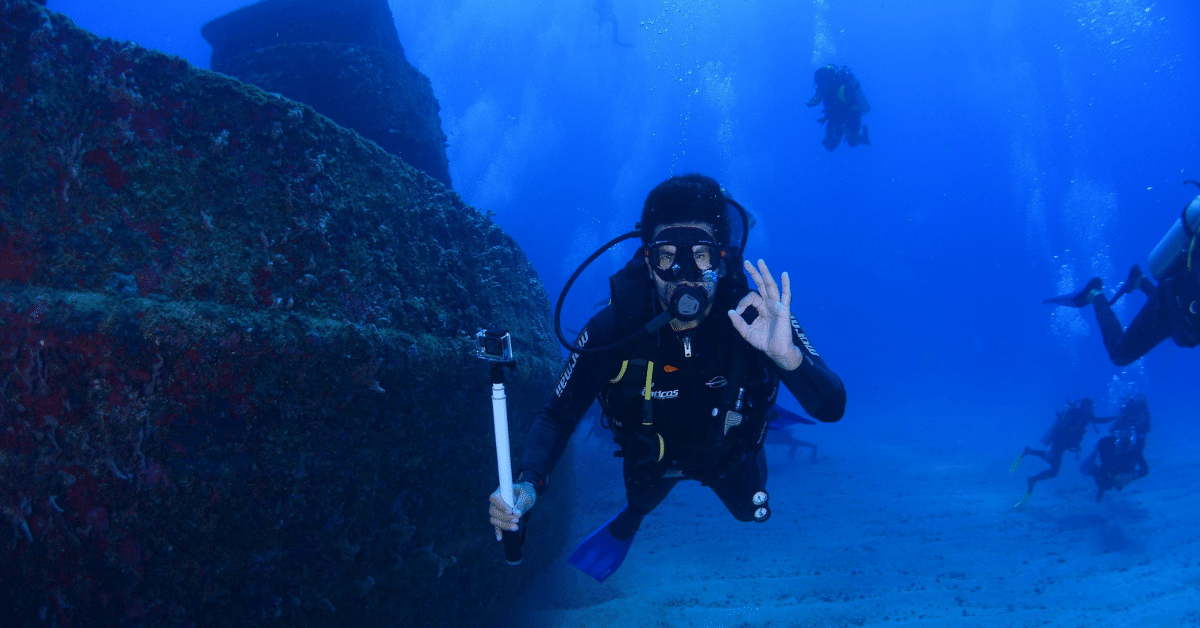Colombia is probably not the first place to cross your mind when thinking of getting your scuba diving certifications. Colombia tends to be pictured as this a country lush with rainforests and full of history, which it is. One thing that gets overlooked is the amazing coastlines they have, which make for great scuba diving conditions and therefore a great place to get your scuba diving certifications.
Where to go diving in Colombia
San Andres
San Andres is an island located off the west coast of Nicaragua. There are daily flights from most of the major cities in Colombia. From Bogota it is about a 2 hour flight and costs around $100 roundtrip.
San Andres has a very Caribbean vibe, crystal blue waters and beautiful beaches. These conditions make it a perfect place to go scuba diving in Colombia.
If you’re visiting San Andres make sure to check out Banda Dive Shop or Divers Dive Center Team.

Santa Marta
Santa Marta is located in the northern region of Colombia, just a few hours drive west of Barranquilla. It is a very popular destination for Colombians looking to go on a vacation, but not nearly as many foreign tourists.
You’ll most likely go diving near the beautiful Tayrona National Park. This area has crystal blue waters and a gorgeous reef.
Santa Marta is where I ended up getting my wreck diver certification with Caribbean Pro Diver.
Cartagena
Cartagena is located just a few hours drive east of Barranquilla, and a short flight from Bogota. Cartagena gives divers the opportunity to dive over huge reefs, and enjoy great visibility with the crystal clear waters.
Some of the best ranked dive shops in all of Colombia can be found here such as Cartagena Divers and Divers of Baru.
Scuba Tips for Colombia
- Bring Cash – A lot of the dive shops only accept cash, or charge a fee if you are going to be paying by credit card.
- Park Fees and Taxes – Many of the areas in Colombia require an additional park fee or entrance tax. This is usually not included in the price of the dive and must be paid the day of. Bringing some small denominator pesos is a good idea.
- You don’t need to know perfect Spanish – All of our dive instructors were bilingual, so you don’t need to know Spanish. Knowing some key phrases will be helpful though.
5 Reasons to Get Your Scuba Certification in Colombia
The Cost
Colombia is one of the cheapest destinations I have ever been scuba diving. For a two tank dive in Santa Marta it cost me about $41 and it included gear. Compare this to my $250 two tank dive in the Maldives and I’d say it was a pretty good deal.
Not all of the dive shops will include gear, so just make sure to check before you’re booking. It is a similar scenario for Nitrox certified divers. One day we used Nitrox and paid an additional $5 per tank.
Prices are pretty similar throughout all of Colombia. The range that you can expect to pay for diving in Colombia is going to be anywhere from $40 to $60 for a two tank dive.
While I was in Colombia I decided to get wreck diver certified, this cost me about $200. This included my e-learning, in-person training and 4 wreck dives. If I had more time I would’ve done a few more certifications on my list.

Small Groups
One thing I noticed while getting my wreck diving scuba certification in Colombia is that they keep the group sizes small. There was one other wreck diver in my class, and we were put on a boat together with an instructor and that was it.
It was a similar scenario for those who were getting their advanced scuba certification. They had 4 people on their boat and two dive instructors.
It was a nice feeling to have a small group when getting certified to make sure that I am not missing any crucial steps. On the fun dive boat trips they had limited the boat to 12 divers and 2 instructors. Not the same ratio as the certification dives, but they allowed us a bit more freedom since we were all advanced certified.
Multiple Dive Certification Options
When I first was planning my trip to Colombia I had no intentions of getting any certifications. Rather, I just wanted to go enjoy scuba diving. After reaching out to some dive shops a few asked if I wanted to do any certification courses or I was just looking for “fun dives”.
I started to do some research and noticed that Colombia had a lot of opportunities for some additional diving specialties. They had some of the common one such as advanced open water (which if you don’t have already I would highly recommend it), but also ones that are offered only in certain areas.
The big one that caught my eye and what I ended up getting certified in was wreck diving. Not all dive locations have an actual wreck you can get experience with. Some of the other cool ones that I had thought about was tri-gas diving, side tank diving, and dive against debris.
Calm, Clear Waters are Common
When learning a new skill, or trying something for the first time underwater it is important to feel comfortable. Having strong currents, or low visibility can make this very frustrating and difficult. In general when doing a new skill air consumption is usually faster and then adding a strong current or bad visibility you are almost guaranteed to go through even more air.
The waters in Colombia are protected by many reefs, and for the most part the waters are calm and clear. This makes it a lot easier to do your practical skills and feel comfortable without struggling against the elements.
Year Round Diving
San Andreas, Cartagena and Santa Marta are all located near the equator. This means that the temperatures are pretty similar year round. For example, Santa Marta averages 90’s as a high year round and 70’s as a low.
With temperatures being pretty similar year round you can really visit Colombia any time to get your scuba diving certification.




